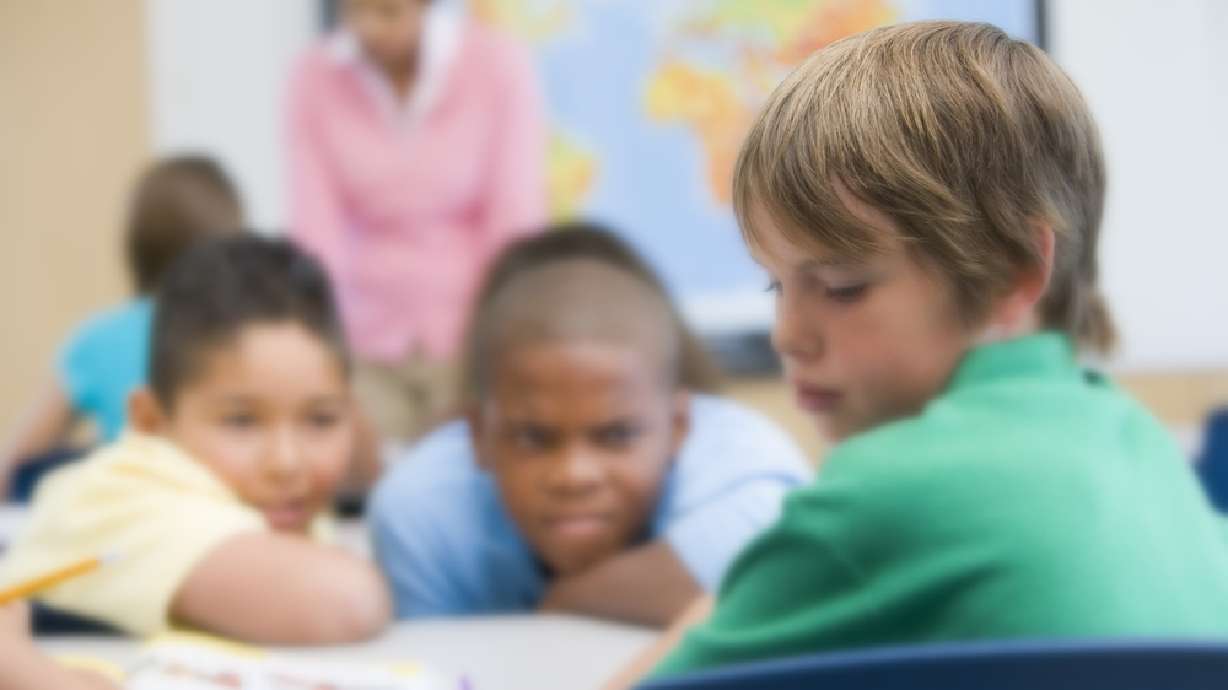Estimated read time: 4-5 minutes
This archived news story is available only for your personal, non-commercial use. Information in the story may be outdated or superseded by additional information. Reading or replaying the story in its archived form does not constitute a republication of the story.
SALT LAKE CITY — Bullying has been with us a long time. The word itself was in use in the mid-1700s and meant approximately the same thing then that it does today. The current Oxford English Dictionary’s definition: “A tyrannical coward who makes himself a terror to the weak.”
Bullying occurs anywhere groups of people congregate for periods of time. This includes schools, workplaces, in homes, on playgrounds, in the military and in nursing homes, as just a few examples of locations with the potential for bullying activity.
Bullying in school has a long a history as well, but is it getting worse? The data is largely anectodal until the early '80s when reporting requirements began. Even worse for comparison, the reporting criteria has changed several times and even the definition of what constitutes school bullying has been repeatedly redefined.
Related:
There is no one current, generally-accepted definition for bullying. The web site bullystatistics.org has this to say: “Some consider bullying to be purposeful attempts to control another person through verbal abuse — which can be in tone of voice or in content such as teasing or threats — exclusion, or physical bullying or violence, which the victim does not want. While some tie the feature of 'peer abuse' and 'repeated activity' into the definition of bullying, others acknowledge single instances and age difference in their definitions of bullying.”
The federal government includes the following in its definition: “In order to be considered bullying, the behavior must be aggressive and include:
- "An imbalance of power: Kids who bully use their power — such as physical strength, access to embarrassing information or popularity — to control or harm others. Power imbalances can change over time and in different situations, even if they involve the same people.
- "Repetition: Bullying behaviors happen more than once or have the potential to happen more than once. Bullying includes actions such as making threats, spreading rumors, attacking someone physically or verbally, and excluding someone from a group on purpose.”
The reality is that there is no way to definitively determine if bullying in schools is worse than 20 or 30 years ago. Either records do not exist or changes in reporting protocol simply preclude valid comparison.
- Population of school-age children (5-18): 509,163
- Victims: 38,544
- Victims/Bullies: 8,045
- Bullies: 36,761
- Total estimate involved in bullying:
- 83,350
Source: bullypolice.org
We can, however, compare the past 10 years or so, and current statistics can give a snapshot of the prevalence of bullying in schools. United States Justice Department school bullying statistics and cyberbullying statistics studies predict that this month, one out of every four kids will be bullied by another youth.
Bullypolice.org, an anti-bullying advocacy group, reports that 22.8 percent of Utah’s school-age children have felt the effects of bullying activity.
What is certain is that the consequences of allowing bullying to continue in a school setting are significant and can be catastrophic. Bullied children have injured themselves, some to the point of suicide. Others have struck out against their tormentors.
Many of the school shootings investigated over the last 15 years indicate a history of bullying victimhood for the shooter. The Justice Department’s studies and surveys note that teenagers believe revenge is the strongest motivation for school shootings. Among the findings:
- 87 percent said shootings are motivated by a desire to “get back at those who have hurt them.”
- 86 percent said that “other kids picking on them, making fun of them or bullying them” causes teenagers to turn to lethal violence in the schools.
The most telling conclusion from the studies may be this: Much more than half of all students do not feel safe in their school.
The most telling conclusion from the studies may be this: Much more than half of all students do not feel safe in their school.
But there is some good news. Statistics indicate that incidents of bullying, in the traditional face-to-face incarnation, are at least static and in many schools are actually dropping. Many schools have introduced anti-bullying programs like Rachael’s Challenge and others, and they are having a positive effect.
However, the ubiquitous nature of kids with smartphones has led to an explosion in the phenomenon of cyberbullying. This is so much more difficult for school officials to address. Much of this activity takes place off of school campuses. This, coupled with a host of other legal issues for schools, limit the effectiveness of school-based responses to cyberbullying.
School bullying, in all its forms, has been high-profile in the media and even in conversations around the water cooler, for that matter. And rightfully so, as many of us have kids or grandkids who go to school every day. The problem, however, is much wider than just our schools. Bullying is, at the root, a societal problem, and our schools are simply a reflection of the society they serve. An expection that schools alone can address this issue in isolation is doomed to fail.
Guy is a longtime educator, having taught and coached tennis and swimming. He is school safety and security administrator for the Bonneville School District in Idaho Falls, Idaho. Guy has been married for 26 years and has three children.










